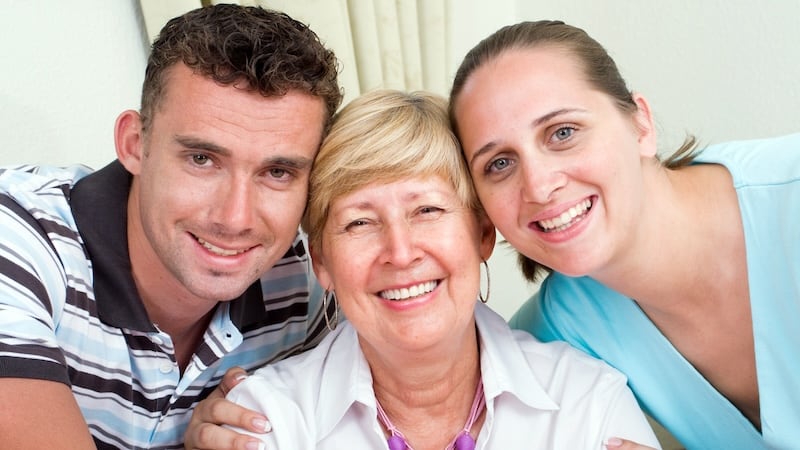Financial Advice on Taking Care of Mom and Dad
Kiplinger’s Expert Financial Advice Tip sheets on housing for seniors, planning for Alzheimer’s, living trusts

Tip sheets on housing for seniors, planning for Alzheimer’s, living trusts
By Kiplinger’s Personal Finance © 2013
CREATIVE HOUSING FOR SENIORS
By Jane Bennett Clark
Lately, I’ve been considering downsizing, not only to save on mortgage payments and maintenance but also to get a jump on my next phase of life. So far, the choices — boxy condos in antiseptic high-rises or houses that are short on space but long on yard work —don’t appeal. And I’m loath to give up the relationships I’ve formed in my current neighborhood.
Takoma Village, a cohousing community in Washington, D.C., not far from my neighborhood, might be the solution. Among its features: condos clustered around a central courtyard, a common house where residents can socialize and share meals, and a system whereby residents run and maintain the property themselves. Cohousing communities aren’t communes. Residents own their own condos, for which they pay prices on par with local real estate values. Nor does co-housing require nonstop togetherness. “The site design is such that you can retire to the privacy of your own home,” says Rebecca Lane, executive director of the Cohousing Association of the United States (cohousing.org). Although eating together isn’t required, “shared meals are the heartbeat of cohousing,” she says.
At Takoma Village, residents participate in group chores eight times a year, which also encourages socializing, says Eleanor Whitman, 82. “The retired guys are out fixing fences. People who are interested in food are making wonderful meals.” And help, such as pet-sitting, checking on a sick neighbor or providing rides to the grocery store, is plentiful.
As with most co-housing communities, Takoma Village is open to residents of all ages, a plus for older people who don’t want to live exclusively with other older people. But not everyone is keen on sharing meals with 2-year-olds or sidewalk space with teenagers. Architects (and spouses) Charles Durrett and Kathryn McCamant, who introduced cohousing to the U.S. in 1988, have developed six senior communities (current residents are ages 51 and up), and about six more are in the works from other developers. Similar in design to cohousing, senior communities typically set aside one unit for a caregiver.
The idea of having rug rats underfoot doesn’t bother me, but one element of cohousing does: meetings. Self-governance involves a lot of them, says Peter Kent, 63, another resident of Takoma Village. Some residents chafe at the decision-making process; others, busy with work and kids, mostly opt out.
Still, as I contemplate a community where the whole point is to share lives and help each other out, I can’t help but conclude that it would be a nice place to be old.
FINANCIAL PLANNING FOR ALZHEIMER’S
By Kimberly Lankford
Because Alzheimer’s is a progressive disease, families usually have more time to plan than they would with an immediate trauma, such as a stroke. But because Alzheimer’s can last a long time, it’s best to start planning, even if a long-term-care policy or savings will pay for the first few years of care. For example, if it makes sense to deplete your assets to qualify for Medicaid, you would need to give money to your children more than five years before applying.
After you receive a confirmed diagnosis, sit down with your family and talk about what you want, says Byron Cordes, a geriatric care manager in San Antonio. “You’re not going to be able to make those decisions in the future,” he says. Talk about where you want to live and what type of care you want. A geriatric care manager (caremanager.org) can help and may find benefits you didn’t realize you were eligible for, such as special aid for veterans. Care managers tend to cost $85 to $200 per hour or $600 to $1,000 for an initial assessment, says Cordes.
Get a power of attorney and health-care proxy so your spouse or children can make financial and medical decisions later. An elder-law attorney can draft those documents and help with Medicaid planning (see naela.org). Elder-law attorneys typically charge $200 to $400 an hour.
Ask whether your bank needs additional legal documents. Some require their own power of attorney forms even if you have one from a lawyer, and that can be complicated after the Alzheimer’s has progressed.
WHY YOU PROBABLY DON’T NEED A LIVING TRUST
By Sandra Block
Living trusts are typically marketed as a way to avoid the cost and hassles of probate, the legal process to determine that a will is valid and that your property is distributed according to your wishes. All too often, though, they’re sold to people who don’t need them, says Sally Hurme, a project adviser for AARP. An estate plan that includes a trust costs $1,000 to $3,000, versus $300 or less for a simple will. What a living-trust promoter may not tell you:
1. You don’t need a trust to protect assets from probate. You can arrange for most of your valuable assets to go to your heirs outside of probate. A home or other property that’s owned jointly with the right of survivorship goes directly to the joint owner when you die. Likewise, pensions, retirement accounts and life insurance policies automatically transfer to the beneficiary. You can keep bank accounts out of probate by setting up payable-on-death accounts. More than a dozen states allow transfer-on-death deeds for real estate, says Mary Randolph, author of The Executor’s Guide, by Nolo.
2. Probate doesn’t have to be a nightmare. Many states have streamlined probate for small estates. In California, for example, inheritors of estates valued at up to $150,000, excluding property that passes directly to beneficiaries, can skip probate.
3. You must transfer property to a trust. For example, if you want your home to be included, you need to record a new deed transferring ownership to the trust. This can be a hassle, but if you don’t, the living trust is a “worthless piece of paper,” Hurme says.
4. There may be unforeseen consequences. When you create a trust, you’re the trustee, and most married people name their spouse as joint or successor trustee. This could create problems if you become incapacitated and your spouse develops, say, dementia. Randolph recommends naming another successor, such as an adult child. Finally, don’t believe that a living trust will make it easier to qualify for Medicaid. Assets in a living trust are “countable” for purposes of Medicaid eligibility.
Sometimes a living trust does make sense. If you own out-of-state property, such as a vacation home, putting it in a living trust will save your heirs from probate in that state. And Danielle Mayoras, an elder-care lawyer, recommends living trusts to clients who want to leave more to one child than the others.


